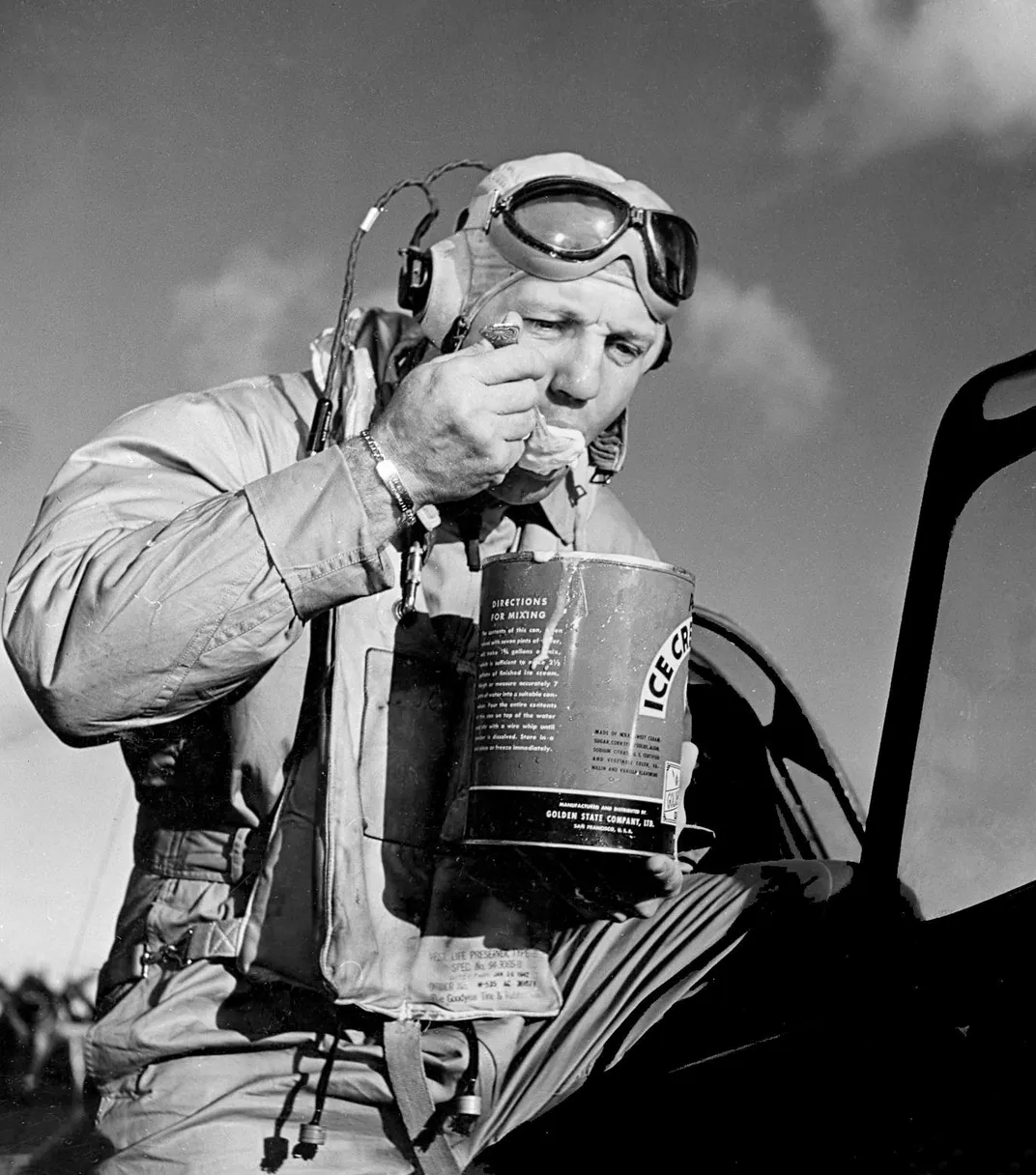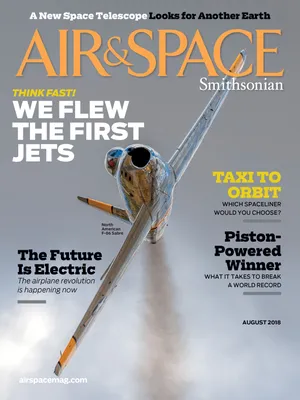DIY Ice Cream in Wartime
Take one Corsair, 5 ammo cans, canned milk and circle at 33,000 feet.
/https://tf-cmsv2-smithsonianmag-media.s3.amazonaws.com/filer/ee/c0/eec0d5de-604e-4f11-81e3-e355556ea380/01a_aug2018_hansgroenhoff_hgc-1448_live.jpg)
By late September 1944, the men of U.S. Marine fighter squadron VMF-122 were stuck on Peleliu and bored. Their F4U Corsairs were only 10 minutes’ flight time from Japanese-held islands, but the enemy, cut off from their supply lines, posed no aerial threat. As squadron commander J. Hunter Reinburg recounted in his autobiography Combat Aerial Escapades: A Pilot’s Logbook, he told a reporter, “This dive-bombing and strafing just isn’t as exciting as dogfighting, but the damn Japs won’t come up and fight.”
Reinburg, determined to raise morale on a humid tropical island with no fresh food and no refrigeration, had a plan. His maintenance crew cut the ends off an old belly-mounted drop tank, strung wire at both ends, and mounted an access panel to the side. Into this panel, secured by the wires, went a waterproof can that ordinarily stored .50-caliber bullets. And into that, the mess sergeant poured a mixture of canned milk and cocoa powder. Reinburg planned to ascend to high altitudes, where temperatures are well below freezing, and return with a gift for his men: Five gallons of homemade chocolate ice cream.

After lifting off on what he logged as an “oxygen system test,” Reinburg circled at 33,000 feet over Japanese-held Palau, watching anti-aircraft batteries—useless over 28,000 feet—waste irreplaceable ammunition trying to hit him. After 35 minutes of fireworks, he returned to Peleliu with a disappointing cargo. The mixture was cold but not frozen (the squadron scarfed it anyway), a failure the crew chalked up to its proximity to the hot engine.
For the next attempt (a “supercharger test flight”), they bolted ammo cans to the underside of a removable maintenance panel on each wing, well away from the engine—doubling their yield to 10 gallons, enough for 100 men. This time the mixture froze. The squadron again devoured it immediately. But the ice cream was too flaky for Reinburg’s taste, so his crew modified the ammo cans with small propellers: The wind turned the propellers, which drove a screw inside the can, churning the mixture. The result, finally, was a smooth, creamy chocolate ice cream.
Operation Freeze flights soon became routine, rotated between the squadron’s pilots and airplanes. They went off without a hitch, wrote Reinburg, until his boss, group operations officer Colonel Caleb Bailey, called to make clear that he didn’t buy the “test flight” ruse. “Listen, goddammit, you guys aren’t fooling me,” Bailey told a VMF-122 officer. “I’ve got spies. You tell [Reinburg] I’m coming over there tomorrow and get my ration.”
Reinburg’s Marines were not the only ice cream-makers of the war. B-17 crews in Europe brought ice cream mixtures along on operational bombing raids, according to a 1943 New York Times article, and at least one unit used its P-47s to create a real delicacy, vanilla ice cream mixed with canned fruit.
